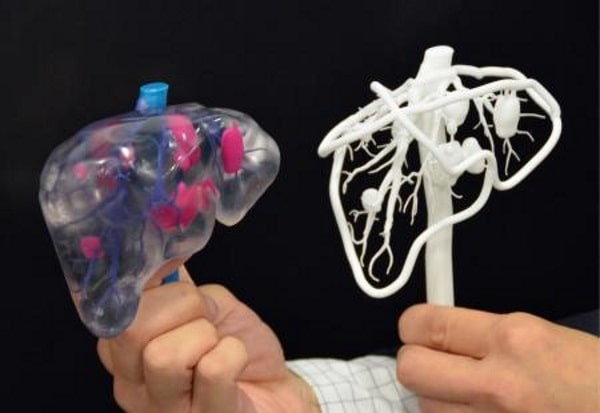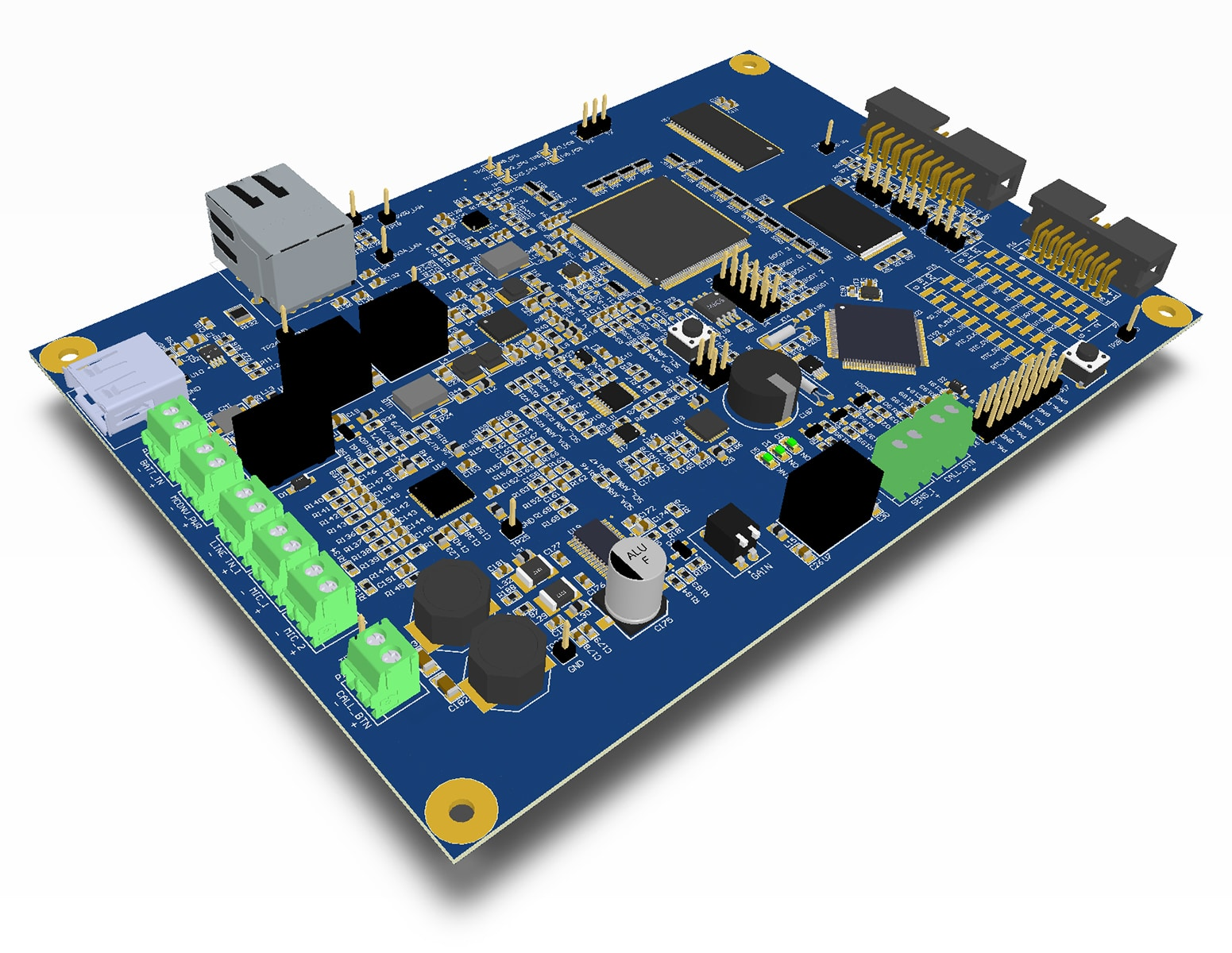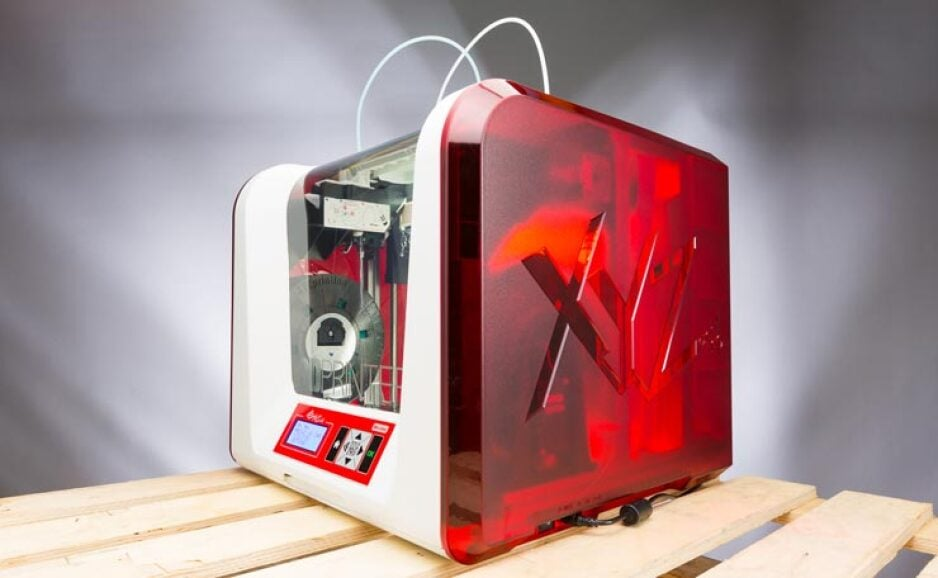3D-printed titanium parts are revolutionizing the aerospace industry, particularly with Boeing’s upcoming integration into its 787 Dreamliner aircraft. This innovative application of additive manufacturing, facilitated by Norsk Titanium, marks a pivotal moment as these components will be the first FAA-approved 3D-printed titanium elements to serve as structural components in commercial aircraft production. With Boeing’s plans to incorporate up to 1,000 such parts, the efficiency and economic benefits of using 3D printing technology are becoming increasingly evident, potentially saving up to $3 million per aircraft. The collaboration with Norsk Titanium showcases how this cutting-edge technology can significantly enhance performance and reduce costs for mass-produced planes. As interest in additive manufacturing surges, the aviation sector is tirelessly exploring how 3D-printed titanium components can shape the future of air travel.
The integration of titanium components produced through additive manufacturing is set to transform aircraft assembly processes. This method, often referred to as 3D printing technology, is not just a trend but a game-changer, especially for major players in the aviation sector like Boeing. By leveraging the capabilities of 3D printing, manufacturers are exploring novel ways to enhance the efficiency of commercial aircraft production. With collaborations such as the one between Boeing and Norsk Titanium paving the way, the potential for producing lightweight and durable parts is becoming clearer. As this technology gains traction, it underscores a significant shift towards more innovative, cost-effective solutions in the aerospace industry.
The Role of 3D-Printed Titanium Parts in the Boeing 787 Dreamliner
Boeing’s decision to incorporate 3D-printed titanium parts into the construction of the 787 Dreamliner marks a significant milestone in the integration of additive manufacturing within the aviation industry. The use of these advanced materials will not only enhance the structural integrity of the aircraft but also pave the way for further innovation in commercial aircraft production. With an initial four titanium parts planned for each airplane, Boeing aims to ultimately utilize as many as 1,000 of these critical components, showcasing a growing confidence in the capabilities of 3D printing technology.
This collaboration with Norsk Titanium, which has developed a unique Rapid Plasma Deposition process, signifies the FAA’s recognition of 3D-printed titanium parts as viable structural elements in commercial aviation. These parts are strategically located near the rear of the Dreamliner, where strength and weight considerations are paramount. As Boeing manufactures around 144 Dreamliners each year, the cost-saving potential of $2 million to $3 million per aircraft by using 3D-printed components can significantly impact the overall economics of aircraft production.
Additive Manufacturing: Transforming Aircraft Production Processes
Additive manufacturing, or 3D printing, has revolutionized the way aircraft components are designed and produced. By creating parts layer-by-layer, this technology offers unparalleled flexibility in design, allowing engineers to optimize the functionality of each component without the traditional constraints posed by conventional manufacturing methods. For Boeing, the introduction of 3D-printed titanium parts represents an evolution in their production processes, enabling them to respond to market demands more quickly and efficiently.
Furthermore, the rapid development and implementation of 3D printing in the aerospace sector are encouraging other companies to invest in similar technologies. Major players like Airbus and General Electric are already exploring the potential of additive manufacturing for their respective fleets. As these technologies mature, they could dramatically reduce production timelines, lower costs, and enhance the performance of aircraft, setting new standards in commercial aircraft production.
Norsk Titanium and the Future of 3D Printing in Aviation
Norsk Titanium plays a pivotal role in the advancement of 3D printing technology for the aviation sector, particularly with their innovative practices that have gained FAA approval. Their patented Rapid Plasma Deposition technology enables the precise melting of titanium wire to create robust parts that meet rigorous safety and performance standards. By collaborating with Boeing, Norsk Titanium is not just providing components but also delivering a glimpse of the future of manufacturing where speed and efficiency are paramount.
The partnership highlights the potential of 3D printing to reshape the industry, demonstrating how it can facilitate the transition to more lightweight designs that improve fuel efficiency. As increasing numbers of aircraft manufacturers adopt additive manufacturing techniques, the benefits of reduced weight and enhanced aerodynamics will likely lead to cost savings and better environmental performance, ultimately benefiting airlines and passengers alike.
Innovations in 3D Printing Technology: The Path Ahead
The advancements in 3D printing technology have opened new pathways for innovation in aircraft design and manufacturing. Boeing’s efforts to harness additive manufacturing, particularly with their investment in industrial printers capable of complex geometries, underscore a commitment to evolving the production landscape. The ability to create bespoke parts that are lighter yet stronger stands to transform how aircraft assemblies are conceived, with implications for everything from performance to maintenance.
Additionally, 3D printing allows for rapid prototyping and testing, which can significantly shorten development cycles for new aircraft models. As manufacturers continue experimenting with different materials and printing processes, we can expect to see rapid advancements that not only enhance the capabilities of commercial aircraft but also improve safety and sustainability practices across the industry. The continual push towards innovative solutions like those seen with Boeing and Norsk Titanium signifies a growing trend that promises to redefine aviation manufacturing.
The Economic Impact of 3D-Printed Components on Airline Operations
The integration of 3D-printed titanium parts into the Boeing 787 Dreamliner is poised to have significant economic implications for airline operations. By reducing production costs by millions per aircraft, airlines will benefit from enhanced profitability, particularly in a competitive market where operational costs are under constant scrutiny. The savings achieved through additive manufacturing can be redirected towards customer service improvements, fleet expansion, and even investment in more environmentally friendly technologies.
Moreover, the scalability of 3D printing opens doors for customized production runs, allowing airlines to source parts that meet their specific operational needs on demand. This flexibility not only expedites the manufacturing process but also minimizes the wastage associated with traditional manufacturing, contributing to more sustainable practices within the industry. As this trend continues to grow, we can expect a paradigm shift in how airlines view maintenance and parts sourcing, ultimately leading to greater efficiencies.
Enhancing Design Capabilities with Additive Manufacturing
One of the most compelling advantages of 3D-printed titanium parts is the enhanced design capabilities they offer engineers. With traditional manufacturing techniques, the limitations of materials often dictate the design process; however, 3D printing allows for greater creativity and innovation in how parts are developed. The capability to produce complex shapes that would be difficult or impossible to achieve through conventional means empowers engineers to design components that are not only lighter but also structurally optimized for their specific functions.
This shift in design philosophy is becoming increasingly important in the context of aerospace engineering, where performance and weight management are critical factors. By leveraging additive manufacturing, Boeing and other companies can experiment with new designs that improve aerodynamics and fuel efficiency, leading to more advanced and sustainable aircraft. The ability to rapidly iterate design concepts and test them quickly presents opportunities that could redefine standards in the aviation industry.
FAA Approval and the Challenges of Integrating 3D Printing in Aviation
The process of obtaining FAA approval for 3D-printed parts has been a meticulous journey, involving rigorous testing protocols to ensure the highest safety standards are met. Boeing and Norsk Titanium have demonstrated their commitment to safety by adhering to strict certification deliverables, a critical step in integrating new technology into the commercial aviation sector. This process underscores the importance of compliance and due diligence in adopting 3D printing technology for structural applications.
Despite the challenges, the successful certification of 3D-printed titanium components is a turning point for the industry. It not only legitimizes the technology as a reliable manufacturing method but also sets a precedent for future innovations. Other manufacturers will likely follow suit, further pushing the envelope in terms of what can be achieved through additive manufacturing. As regulations evolve, we can expect even more opportunities for 3D printing technology to enhance the production and maintenance of modern aircraft.
The Broader Impact of 3D Printing on Aerospace Engineering
The impact of 3D printing extends far beyond just Boeing and the 787 Dreamliner; it represents a significant trend within aerospace engineering as a whole. Companies across the industry, from startups to established giants like Airbus and Boeing, are recognizing the benefits of additive manufacturing solutions. The technology facilitates innovative designs and can adapt to changes in consumer demand with unprecedented agility, making it a vital component of future engineering practices.
Moreover, the collaboration between aerospace and tech sectors is likely to spur further advancements in materials science and engineering techniques. As additive manufacturing becomes more mainstream, we can anticipate a shift in educational curricula that emphasizes the importance of these technologies in engineering. This trend will prepare a new generation of aerospace engineers to tackle challenges with advanced solutions, enhancing the overall progression of aircraft design and manufacturing.
The Future of 3D Printing in Commercial Aviation
Looking ahead, the future of 3D printing in commercial aviation appears promising, fueled by ongoing investments in technology and innovation. As more companies like Norsk Titanium develop cutting-edge methodologies, the efficiencies and cost savings realized through additive manufacturing will become increasingly prevalent. With Boeing paving the way through its incorporation of 3D-printed parts in the 787 Dreamliner, other manufacturers will be encouraged to explore similar initiatives.
As the technology matures, we can expect to see not only improvements in production efficiency but also breakthroughs in sustainable practices within the aerospace industry. The ability to minimize waste and optimize material usage through 3D printing aligns with the industry’s goals for environmental responsibility. As these changes unfold, they will redefine the landscape of commercial aircraft production, leading to smarter, lighter, and more efficient aircraft for the future.
Frequently Asked Questions
What are the benefits of using 3D-printed titanium parts in the Boeing 787 Dreamliner?
The integration of 3D-printed titanium parts in the Boeing 787 Dreamliner offers significant advantages such as substantial cost reductions, with estimates suggesting savings of up to $3 million per aircraft. Additive manufacturing allows for lightweight designs and the ability to create complex structures that combine multiple components into a single piece, enhancing overall aircraft performance and efficiency.
How does Norsk Titanium contribute to 3D-printed titanium parts for commercial aircraft production?
Norsk Titanium plays a pivotal role in the production of 3D-printed titanium parts for commercial aircraft by utilizing its Rapid Plasma Deposition technology. This method allows for the efficient printing of titanium components that meet stringent FAA safety standards, marking a significant advancement in additive manufacturing for the aerospace industry, particularly for Boeing’s 787 Dreamliner.
What are the implications of FAA-approved 3D-printed titanium components for aircraft manufacturing?
FAA-approved 3D-printed titanium components, such as those being developed for the Boeing 787 Dreamliner, signify a major step forward in aircraft manufacturing. This approval not only enhances the safety and reliability of these parts but also opens the door for broader adoption of additive manufacturing technology in the aerospace sector, allowing manufacturers to innovate while reducing costs and production times.
How does 3D printing technology impact the design flexibility of aircraft parts?
3D printing technology enhances design flexibility for aircraft parts by enabling engineers to create complex geometries that traditional manufacturing methods cannot easily achieve. This capability allows for more efficient load distribution, weight reduction, and the ability to manufacture components tailored specifically for their functional roles within the aircraft, particularly evident in the Boeing 787 Dreamliner.
What future developments can we expect in additive manufacturing for commercial aircraft?
Ongoing developments in additive manufacturing are expected to lead to wider adoption of 3D-printed titanium parts in commercial aircraft, including the potential scaling up of production from four to over 1,000 parts per Boeing 787 Dreamliner. These advancements will likely continue to enhance cost efficiencies, reduce weight, and allow for increasingly complex and innovative aircraft designs in the near future.
Can you explain Rapid Plasma Deposition technology used by Norsk Titanium?
Rapid Plasma Deposition technology is a cutting-edge 3D printing method employed by Norsk Titanium that involves melting titanium wire using plasma torches within an argon gas environment. This process enables the layering of titanium deposits to fabricate structural components, providing a robust and efficient manufacturing solution for the aerospace industry, particularly in the production of parts for aircraft like the Boeing 787 Dreamliner.
Why is Boeing focusing on 3D-printed titanium parts for the 787 Dreamliner?
Boeing is focusing on 3D-printed titanium parts for the 787 Dreamliner to leverage the technology’s potential for reducing manufacturing costs and improving design flexibility. By incorporating additive manufacturing through partnerships with companies like Norsk Titanium, Boeing aims to enhance the efficiency of their aircraft production processes while maintaining high safety and performance standards.
What role does 3D printing technology play in the future of aircraft production?
3D printing technology is poised to revolutionize aircraft production by allowing manufacturers to produce lighter, more efficient, and structurally integrated components. As seen with Boeing’s collaboration with Norsk Titanium, this technology will likely become central to the aerospace industry, facilitating rapid prototyping, customization, and reduced time-to-market for new aircraft designs.
| Key Point | Details |
|---|---|
| Introduction of 3D-Printed Parts | Boeing plans to use at least four 3D-printed titanium parts for its 787 Dreamliner, potentially scaling up to 1,000 parts. |
| Contract with Norsk Titanium | Boeing has contracted Norsk Titanium, based in Norway, for the production of these parts. |
| FAA Approval | This is the first instance of FAA-approved 3D-printed titanium components being used as structural parts in a commercial aircraft. |
| Production Cost Reduction | Using 3D-printed parts could reduce the cost of each 787 Dreamliner by up to $3 million. |
| Increased Production | Norsk Titanium aims to supply four parts per airplane initially, with a target of over 1,000 parts in the future. |
| Potential Benefits of 3D Printing | 3D printing could reduce costs and weight of aircraft, enabling designs that optimize performance. |
| Technological Innovations | Boeing is actively testing advanced 3D printing technologies, including large-scale printers using various materials. |
| Norsk Titanium’s Technology | Employs Rapid Plasma Deposition technology to create titanium parts layer by layer. |
| Testing and Showcase | The 3D-printed parts will be displayed at the International Paris Airshow. |
Summary
3D-printed titanium parts are increasingly pivotal in the aerospace industry, with Boeing pioneering their use in the 787 Dreamliner. By collaborating with Norsk Titanium, Boeing aims to integrate these innovative components, which are FAA-approved, into its aircraft manufacturing process, potentially saving millions in production costs while enhancing design flexibility and performance. As the technology matures and adoption accelerates, the impact of 3D printing on aviation is set to reshape how structures are conceptualized and manufactured, marking a significant transformation in modern engineering.


